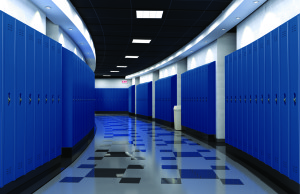 In a recent article regarding building energy performance policy, The Institute for Market Transformation revealed that “the building sector is the single largest user of energy in the United States, accounting for roughly 40 percent of total energy consumption, more than industry or transportation.” This article also stated that the US spends over $400 billion on energy for our buildings. Most buildings use much more energy than is necessary, which is largely due in part by the fact that buildings were constructed before energy codes were in place. However, the owners of these buildings need to upgrade their buildings to be more sustainable. Many are misinformed or don’t have the financial incentives to upgrade, but by raising awareness about this matter, we can save money for both consumers and businesses. In addition, we can see fuel economic growth, while also reducing carbon pollution for a healthier environment. Understanding your building’s energy performance and keeping it on your radar will provide a multitude of benefits. Find out how benchmarking can help your building stay aligned with energy use and cost-effective operations.
In a recent article regarding building energy performance policy, The Institute for Market Transformation revealed that “the building sector is the single largest user of energy in the United States, accounting for roughly 40 percent of total energy consumption, more than industry or transportation.” This article also stated that the US spends over $400 billion on energy for our buildings. Most buildings use much more energy than is necessary, which is largely due in part by the fact that buildings were constructed before energy codes were in place. However, the owners of these buildings need to upgrade their buildings to be more sustainable. Many are misinformed or don’t have the financial incentives to upgrade, but by raising awareness about this matter, we can save money for both consumers and businesses. In addition, we can see fuel economic growth, while also reducing carbon pollution for a healthier environment. Understanding your building’s energy performance and keeping it on your radar will provide a multitude of benefits. Find out how benchmarking can help your building stay aligned with energy use and cost-effective operations.
Why should I use benchmarks?
- Energy benchmarking measures your building’s energy use over time so you can be aware of its energy performance and identify areas to eliminate the energy being wasted. You can also compare your own energy usage to that of other buildings’ to get a better read of where you can be more energy efficient.
- By sharing this information with your city or state, policymakers can analyze the data and determine whether the intended results were achieved. From there, they’ll be able to use resources more appropriately and develop infrastructure plans accordingly.
- Being transparent with your benchmarking data allows stakeholders on a larger scale work together to achieve a common goal. Others will recognize the effort and understand the importance, which can in turn prompt action on their part.
How can benchmarking help energy efficiency?
As buildings release information about their energy use on a large scale, building owners can stay competitive with each other to be the most energy-efficient.
- Energy and cost savings: Energy waste is draining millions of the economy’s dollars. Benchmarking can lead to implementing cost effective measures to reduce this spending.
- Job creation and economic growth: According to the Institute for Market Transformation, 77% of Philadelphia’s commercial building need upgrades, which would generate more than $600 million in local spending, while also supporting 23,000 jobs.
- Improving utilities: Determining what utilities need to be improved in order to be more energy efficient will raise the performance of all buildings.
Energy benchmarking offers a range of benefits that are crucial for building owners, consumers, and the environment overall. Scranton Products utilizes High Density Polyethylene (HDPE) for all of their products. This material reduces environmental impact and offers both initial and long-term improvements to the indoor air quality of your projects. Click here to find out where you can buy Scranton Products.




